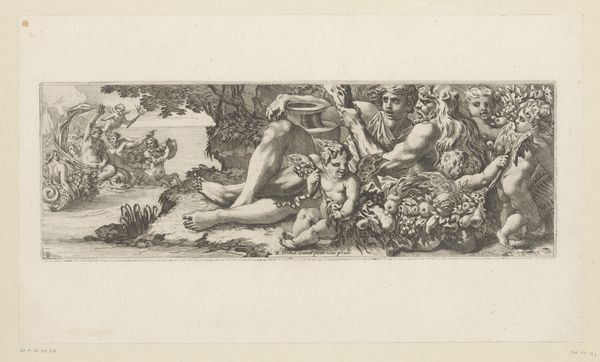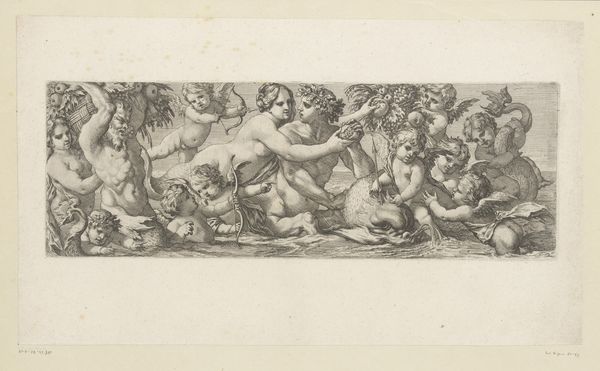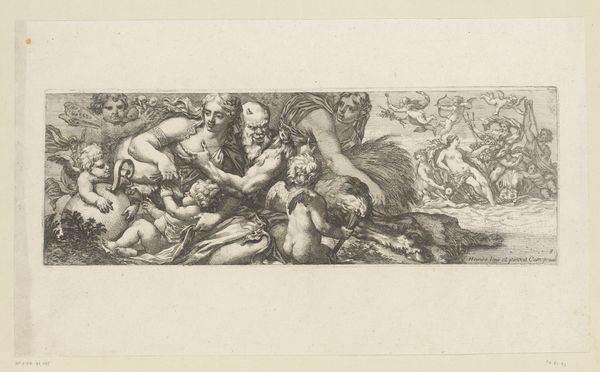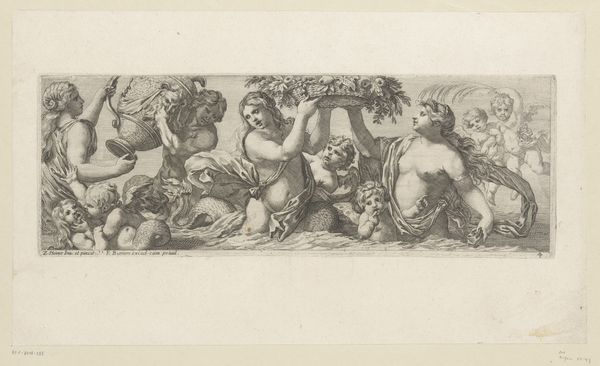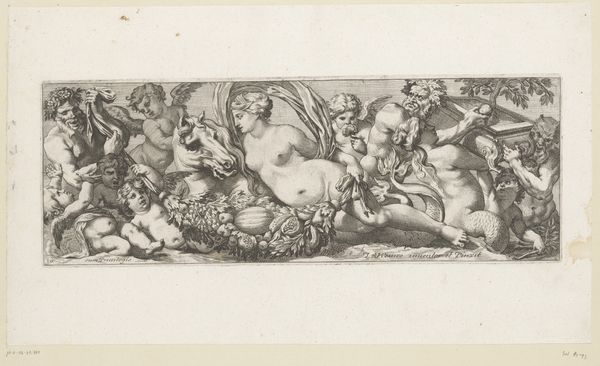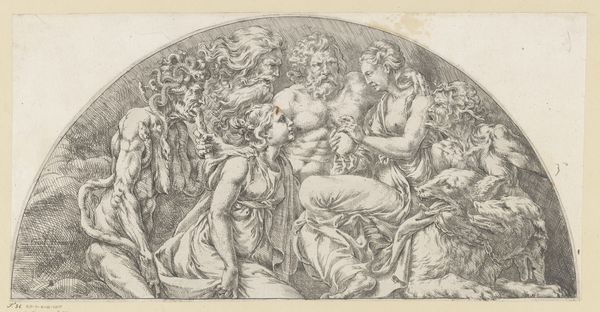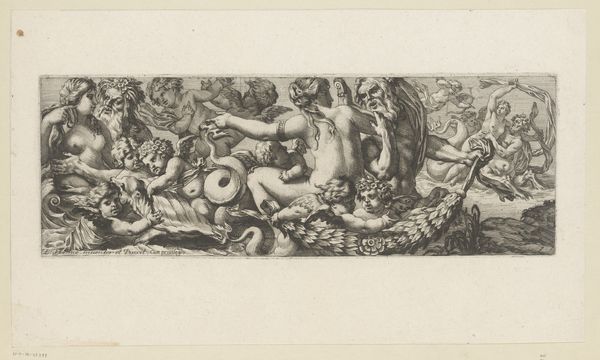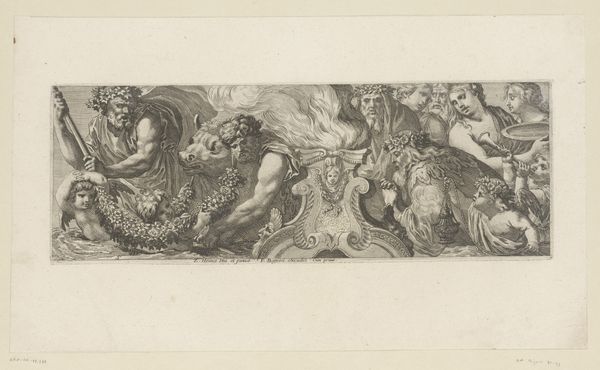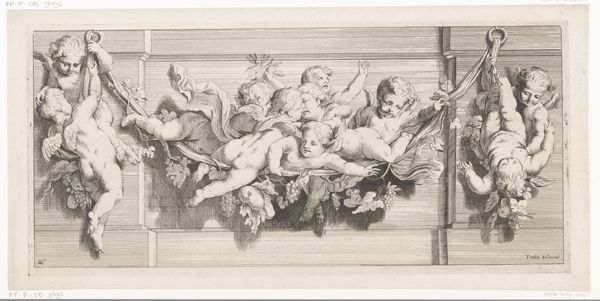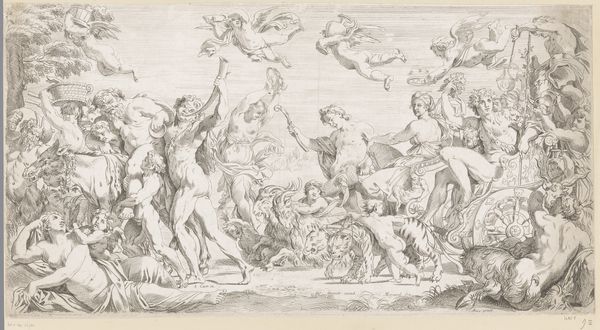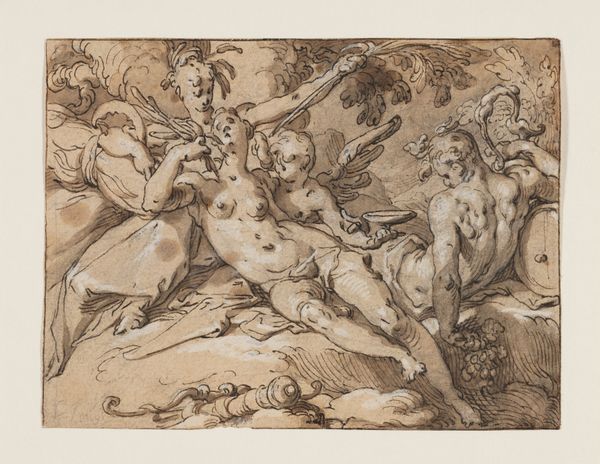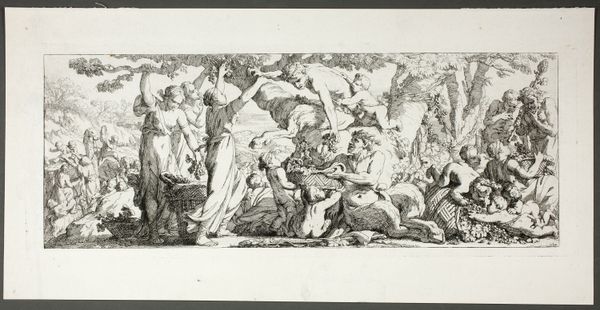
engraving
#
baroque
#
old engraving style
#
classical-realism
#
figuration
#
history-painting
#
engraving
Dimensions: height 121 mm, width 371 mm
Copyright: Rijks Museum: Open Domain
Curator: Oh, what a joyful commotion! The Bacchus and company depicted in this print positively spill over with life and… well, okay, with a kind of boisterous, fleshy exuberance. Editor: This engraving, made sometime between 1630 and 1720, is titled "Bacchus met saters en nereïden in het water" which translates from Dutch to "Bacchus with satyrs and nereids in the water.” I believe the artist is François Bignon. It's so full of mythological figures – a riotous scene, rendered in meticulously fine lines. What does it say to you? Curator: Well, first impression: total Bacchanal! The blurring of figures, the swirling composition - you can almost hear the laughter and music. A touch frenzied, no? Like stumbling upon a very exclusive party you weren’t invited to. It definitely radiates this ecstatic feeling, but beneath that there is darkness—drunkenness and debauchery can go bad so fast. Editor: That tension you’re feeling—I wonder if it’s intentional. The symbolism certainly leans towards the fertile abundance Bacchus represents – grapes, overflowing cornucopias, even the suggestion of water teeming with life. These are age-old symbols that tell stories of prosperity, growth, and vitality. Curator: Mmm, vital chaos, perhaps! And speaking of symbols, all of those bodies are definitely packed together. It’s… a lot. Everyone seems to be holding, embracing or otherwise attached to one another—it makes the piece really visceral. I like it; it’s almost suffocating and overwhelming and… perfect for what’s depicted. Editor: It makes me consider the continuity of these images across centuries. We might look at Bignon’s interpretation of Bacchus, done in the Baroque style of classical realism, and unconsciously recall similar images from ancient Roman frescoes. The human experience of revelry hasn't changed much. Curator: True that! Same party, different century, perhaps slightly more modest clothing - or not! Thinking about it, that ability to tap into something primal, to portray such raw emotion and do it with what is essentially just a black and white line… well that's talent. I imagine Bignon had a merry time creating it, too! Editor: He captured a moment, didn't he? That feeling of fleeting, slightly dangerous joy. Food for thought on a wet afternoon like this.
Comments
No comments
Be the first to comment and join the conversation on the ultimate creative platform.
